#bee bug
Explore tagged Tumblr posts
Text


Eggdad Week: Day 4- Small
#eli draws#sonic#sonic the hedgehog#sonic art#sonic fanart#sonic the hedgehog art#sonic the hedgehog fandom#eli aus#sonic artist#rusty rose#sonic prime#sonic au#bee bug#sonic prime au#dr eggman#eggdad#eggman#mr dr eggman#Rosy and bee were besties until things went wrong#eggdad week 25
331 notes
·
View notes
Text
DO YOU LIKE JAZZ?
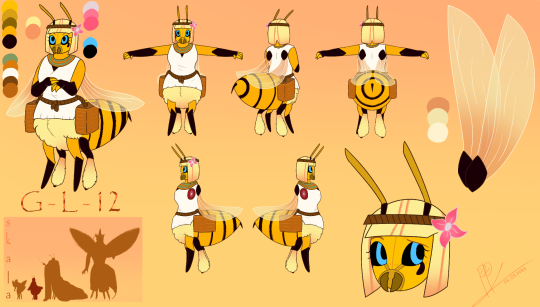
IT'S AN BEE CONCEPT!! SWEET BABY!! 🐝
#drawing#idk#silly art#tags are hard#art#small artist#artist on tumblr#small artist on tumblr#digital artist#digital drawing#digital art#character design#original characters#concept art#character concept#bee#insects#insect#innocent baby#my oc stuff#oc#monster#lalalala#bugs#bug#bee bug
8 notes
·
View notes
Text
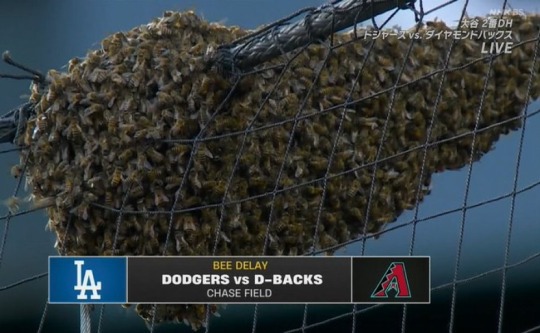


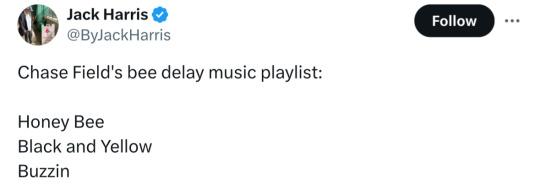


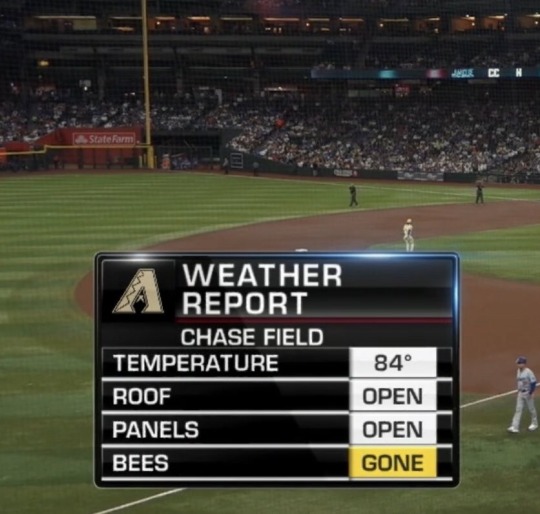
and this is why baseball is the best sport (see also: these baseball sidequests)
#baseball#los angeles dodgers#arizona diamondbacks#bees#naturecore#animals#twitter#mlb#sports#insects#bugs#cats of tumblr#insects of tumblr
64K notes
·
View notes
Photo


Absolute unit of a robber fly found by eldoia87 on Reddit (posted with permission)
This beauty is a Beelzebub bee-eater, Mallophora leschenaulti
Found primarily in Texas and Mexico
#animals#curators on tumblr#insects#bugs#fly#diptera#robber fly#bee killer#beelzebub bee eater#one nice bug
11K notes
·
View notes
Text

let's bee together
#art#illustration#artoftheday#artists on tumblr#artist#digital painting#love#procreate#titsay#titsayart#bee#bug#ladybug
5K notes
·
View notes
Text
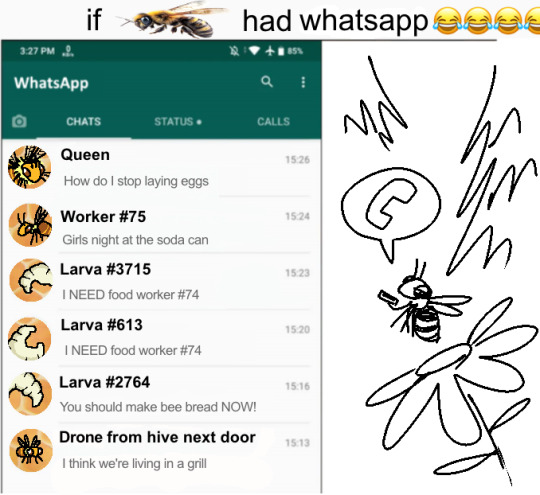
26K notes
·
View notes
Text
Strange Bedfellows: these unprecedented photos show a leafcutter bee sharing its nest with a wolfspider

I stumbled across these photos while I was looking for information about leafcutter bees, and I just wanted to share them, because they're really remarkable. The images were captured by an amateur photographer named Laurence Sanders, and they depict an unprecedented scene that has garnered the attention of both entomologists and arachnologists.

The photos show a leafcutter bee and a wolfspider living in the same burrow.
The leafcutter bee (Megachile macularis) can be seen fetching freshly-cut leaves, which she'll use to line the inner walls of her nest, while the wolfspider sits at the entryway to the burrow; as the bee approaches, the wolfspider moves aside, allowing her to enter the nest, and then she simply watches as the leaf is positioned along the inner wall.

Once the leaf is in position, the bee and the spider seem to inspect the nest together, sitting side-by-side in the entryway. The leafcutter bee seems strangely at ease in the presence of the wolfspider, which is normally a voracious predator, and the wolfspider seems equally unfazed by the fact that it shares its burrow with an enormous stinging insect.

The man who took these photographs discovered the peculiar scene by accident, and he then captured a series of images over the course of about two days (these are just a few of the photos that were taken). During that two-day period, the bee was seen entering the nest with bits of foliage dozens of times, gradually constructing the walls and brood chambers of its nest, and the spider was clearly occupying the same burrow, but they did not exhibit any signs of aggression toward one another.

The photos have been examined by various entomologists and arachnologists, and those experts seem ubiquitously surprised by the behavior that these images depict. The curator of entomology at Victoria Museum, Dr. Ken Walker, noted that this may be the very first time that this behavior has ever been documented, while Dr. Robert Raven, an arachnid expert at the Queensland Museum, described it as a "bizarre" situation.
This arrangement is completely unheard of, and the photos are truly remarkable.
Sources & More Info:
Brisbane Times: The Odd Couple: keen eye spies bee and spider bedfellows in 'world-first'
iNaturalist: Megachile macularis
#entomology#arachnology#leafcutter bee#wolfspider#symbiosis#cool animals#cool bugs#bees#spiders#nature#cute#insects#arachnids#australia#props to the photographer#laurence sanders#this is a cute couple#but their babies would be terrifying
26K notes
·
View notes
Text

i liked repairing space bridges
#tfa#transformers animated#ratchet#bumblebee#i like to make this bug suffer#DIE BRU DIE#PULL THE PLUG!#transformers#bumble prime#i like to think whatever injured ratchet he was saving bumblebee from it#when another war starts up and now ur already attached to this reckless minibot so its 100 times more stressful#putting my grandson that i hate in 100 body mods and limb enhancers so hes bigger and stronger and wont die#bublebee going “where did we get all these spare parts”#ratchet suspiciously missing a leg “uh idk found them”#ratchet upgrading his stingers and bee is like “uhh i thought this wasnt allowed”#ratchet installing 100 lethal protocols into his stingers “idk what ur talking about just shut up”
4K notes
·
View notes
Text

Maybe it's just miserable
21K notes
·
View notes
Text



comic done for a project assignment a few years back!
#throws up actually what do you mean this is over 2 years old#I forgot what this was for. I think it was for insect ecology#my art#bugs#insects#comics#do I tag all these bugs........................#shoutout to:#caterpillars#sawfly larvae#aphids#ants#dung beetles#carrion beetles#bees#locusts#parasitoid wasps#hoverflies#cockroaches#mosquitos#cicadas#flies#yay!#hemiptera#diptera#hymenoptera#blattodea#lepidoptera#coleoptera#orthoptera
4K notes
·
View notes
Text


we could be two bees sleeping in a flower together
(source)
#animals#bee#bees#bug#bugblr#bugs#insect#insects#nature#garden#flower#flowers#positivity#cottagecore#naturecore#grandmacore#gardencore#cozycore#aesthetic#wholesome#cute#romantic academia#romance#goblincore
4K notes
·
View notes
Note
Do you perchance have anymore lore for Bee Bug? He's just so fascinating to me ^-^
Bee Bug is a little rebel in his own way! He helps the resistance by giving them information from the inside, he’s very cautious about it not giving them too much but not giving them too little.
They know he’s not bad, he’s trapped just like most of them are.
He and Knucks are best friends, Knucks tries to get him out of the Eggmen grasp but Bee is just too terrified to get out, who knows what the punisher ent for it will be? He’s just a little guy alright.

His other best friend was Amy before she was…Rusty. To make the wound hurt even more the Eggmen find satisfaction in making Rusty the punisher for each time Bee makes a mistake.
So you know even if Rusty can’t remember it, Bee is seeing his best friend hurt him.
Then theres Shadow! Who appears on the scene after Sonic destroyed the prism. Bee is for Shadow what Nine was for Sonic, he refuses to treat him any differently to Sonic and the anger that he has towards him is now directed at Bee. Which will definitely cause a lot of problems in the future!!
6 notes
·
View notes
Text

carpenter bee study
#art#painting#oil#oil painting#bee#carpenter bee#traditional#traditional art#my art#i love youuuuu painting on panel#this one sold at the exhibition i'm ;v;#also had fun with this one bc i put a touch of iridescent pigment on it that mimics the iridescence of the actual bees hehe#one of the funny things abt hte residency is i almost painted my subjects in phases lol. my first few days were coyote days#then i had my bug days. then my bone days#greatest hits
2K notes
·
View notes
Text

today's bug thing are these bug stickers by daiso japan!
#bug thing#craft supplies#stickers#beetles#snail#caterpillar#ant#butterfly#spider#bee#praying mantis#cicada#ladybug#dragonfly#grasshopper#bugs#insects
2K notes
·
View notes
Photo



Broad-handed carpenter bee, Xylocopa latipes, Xylocopinae
Photographed in Cambodia by geechartier
#animals#curators on tumblr#insects#bugs#bee#carpenter bee#xylocopa#broad handed carpenter bee#one nice bug
5K notes
·
View notes